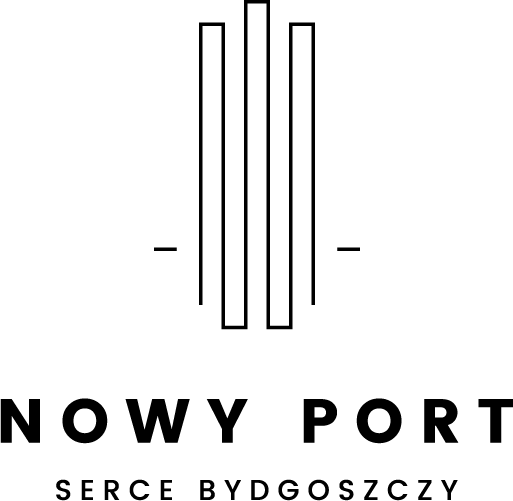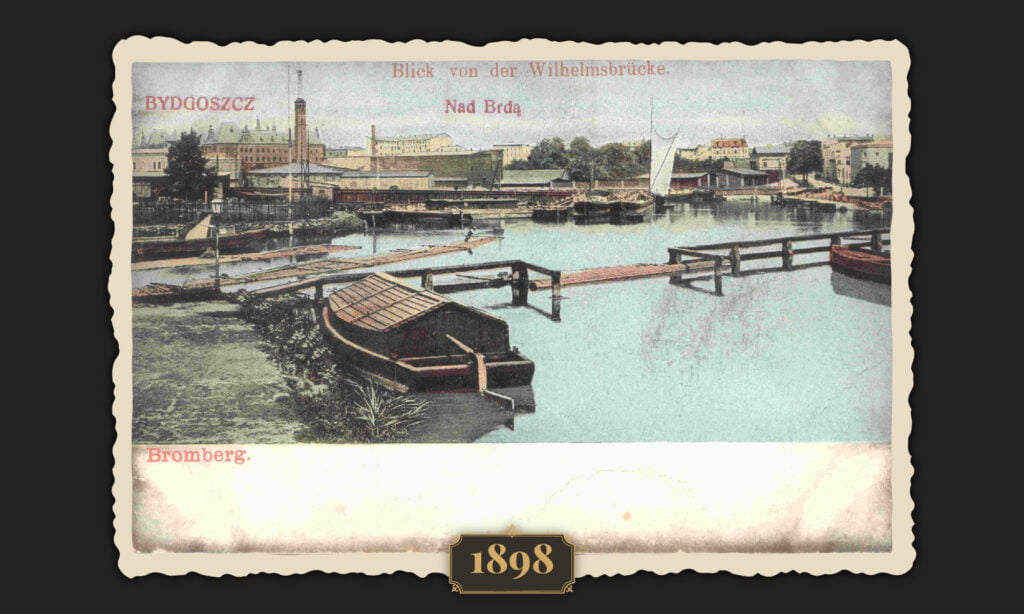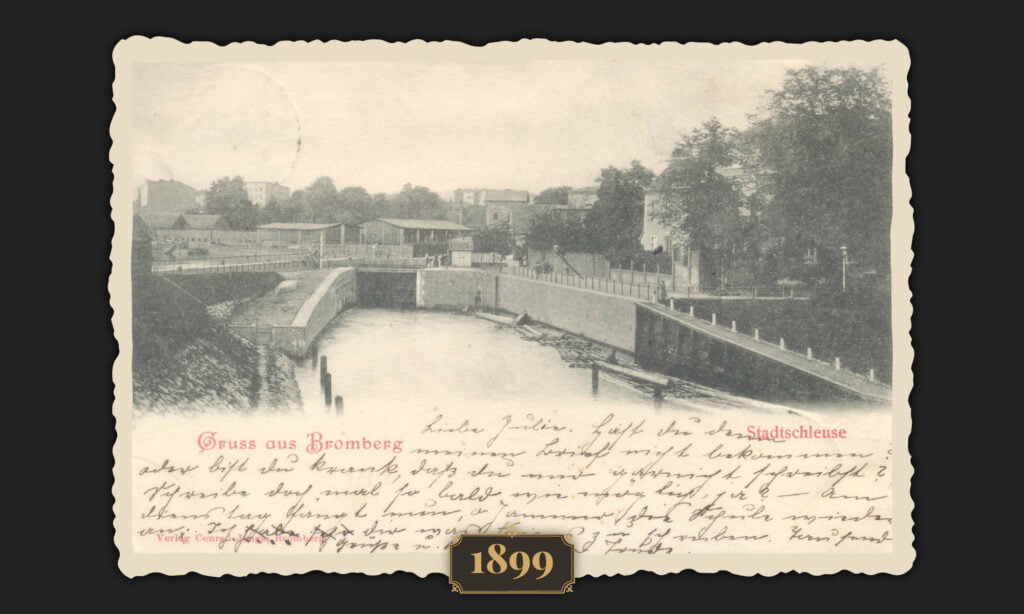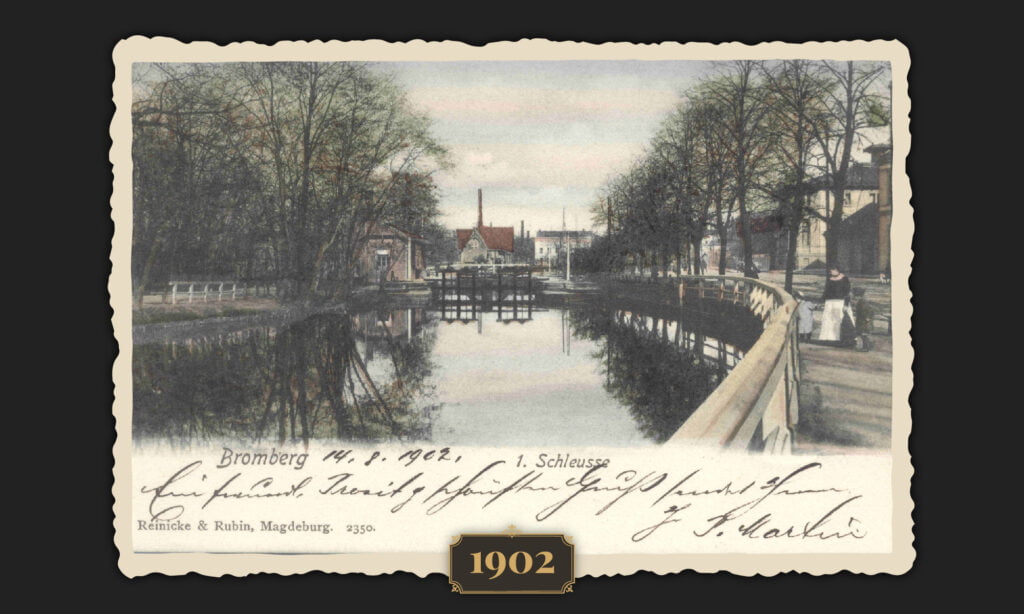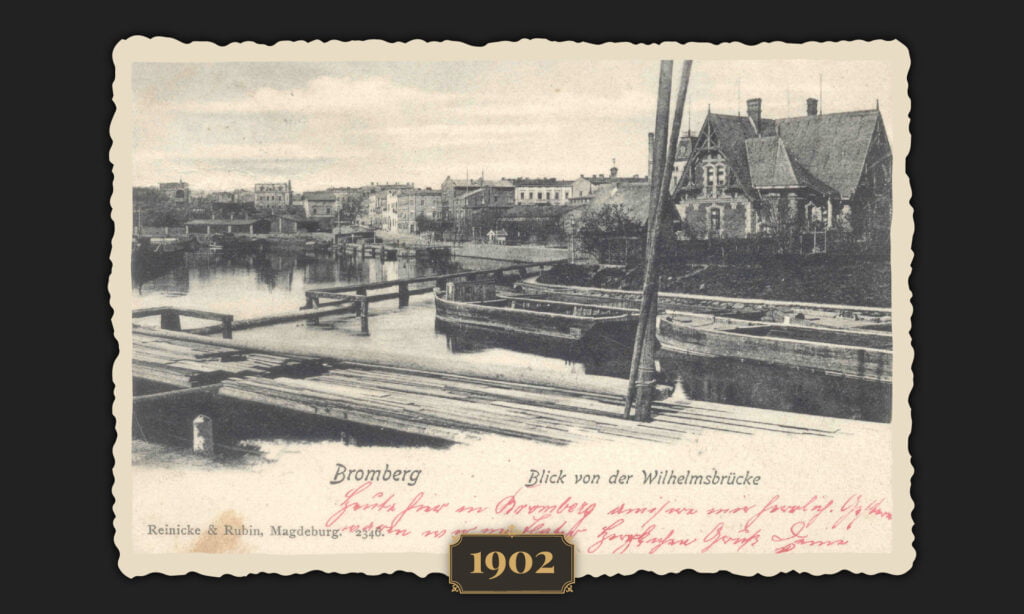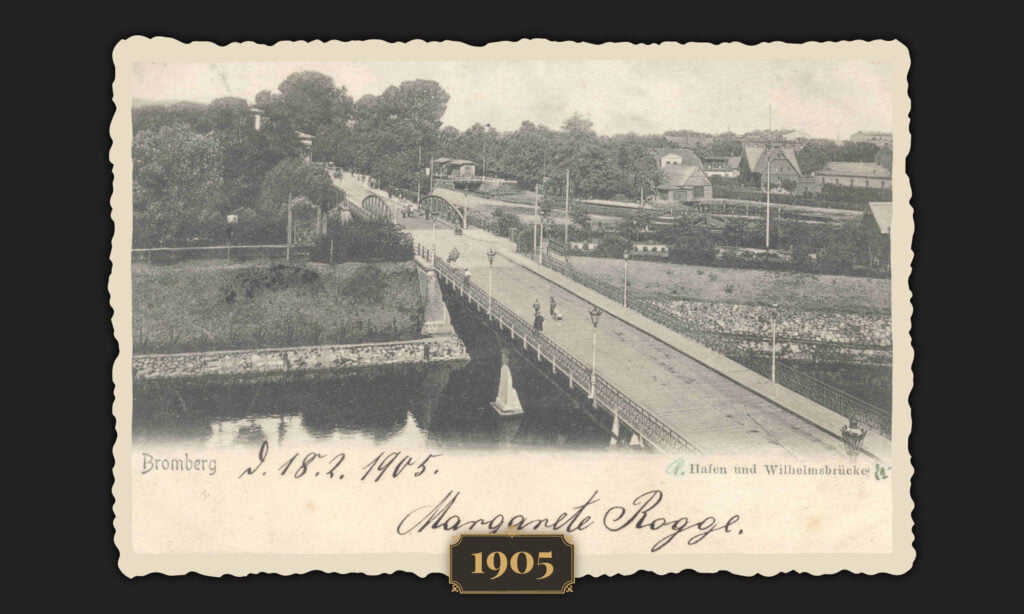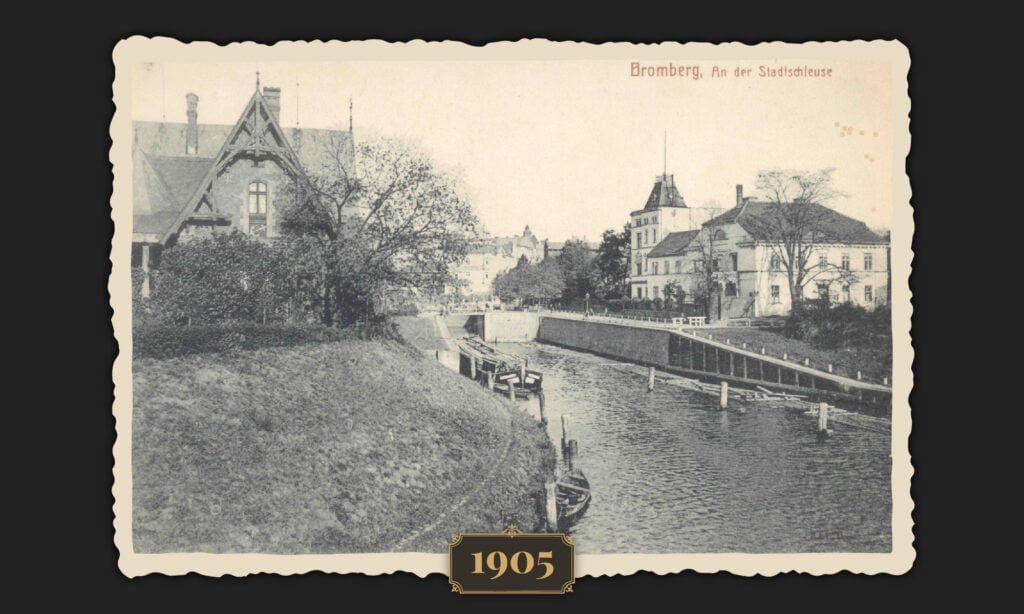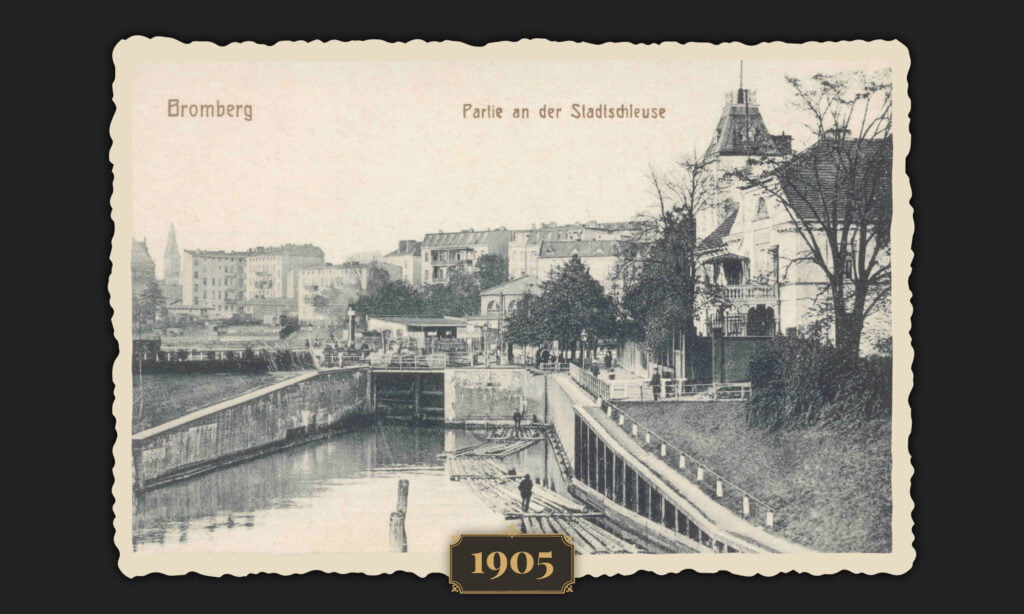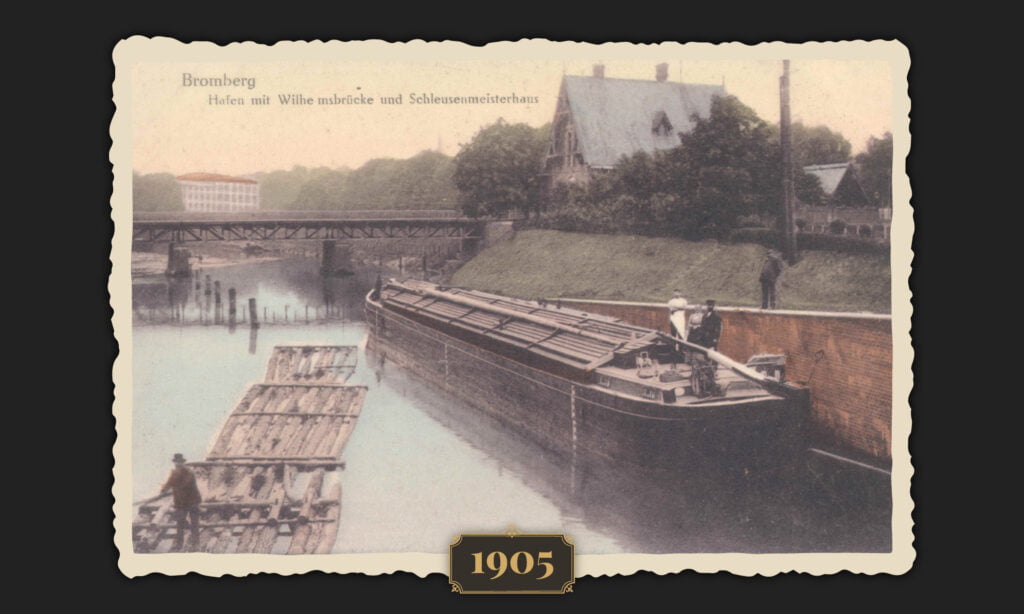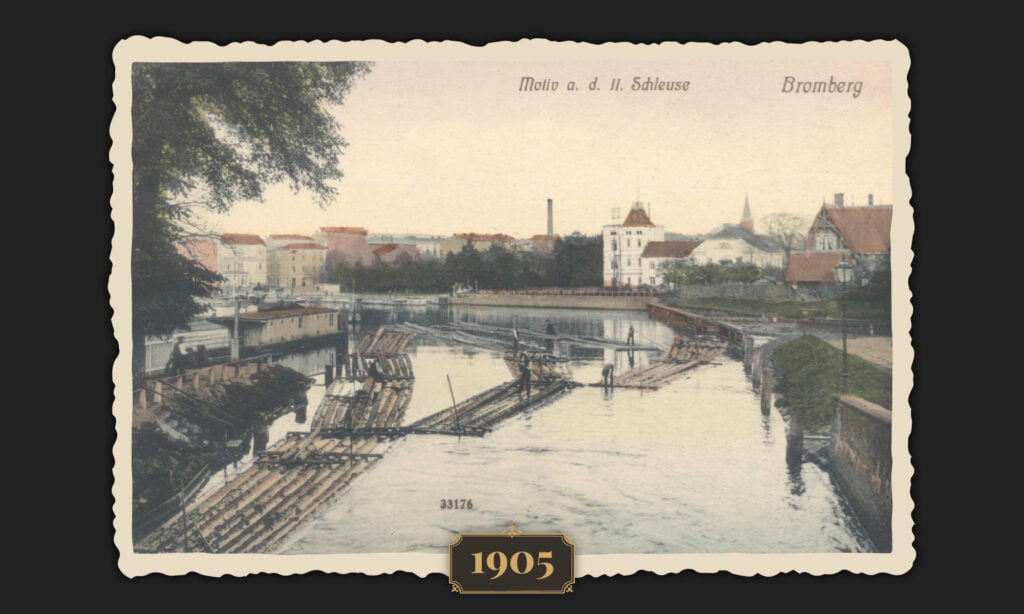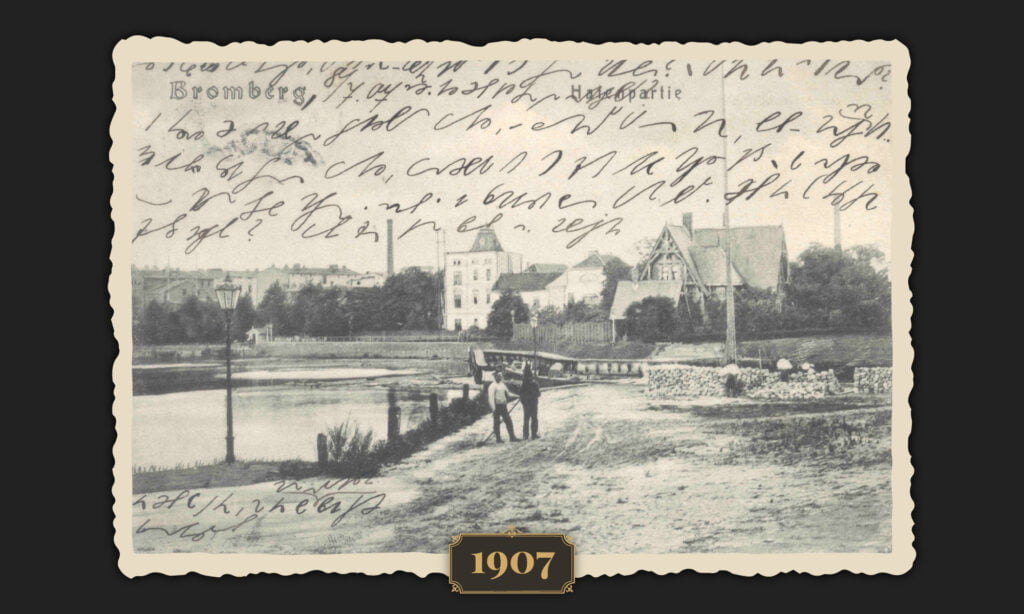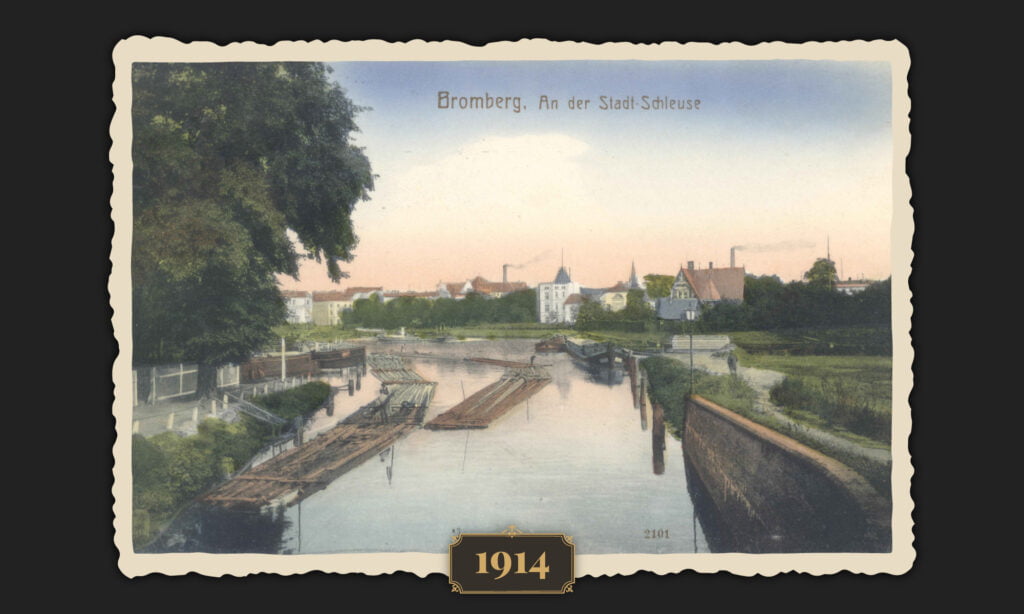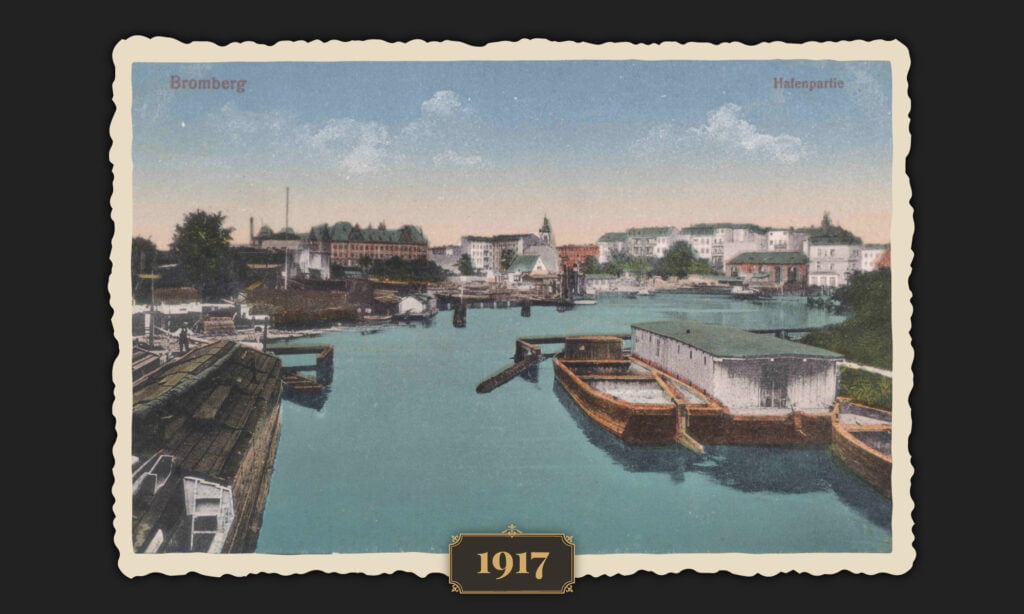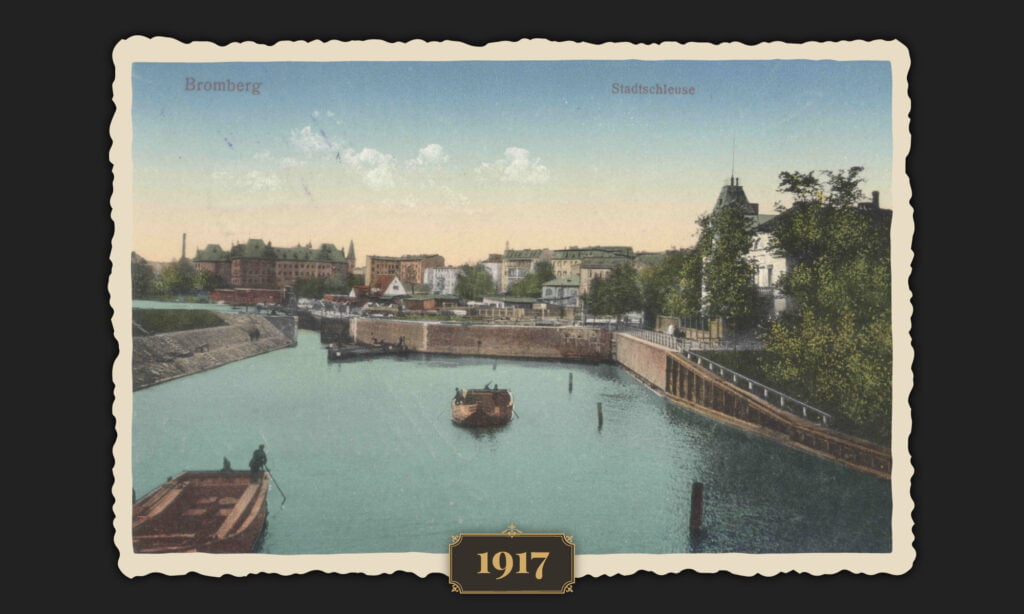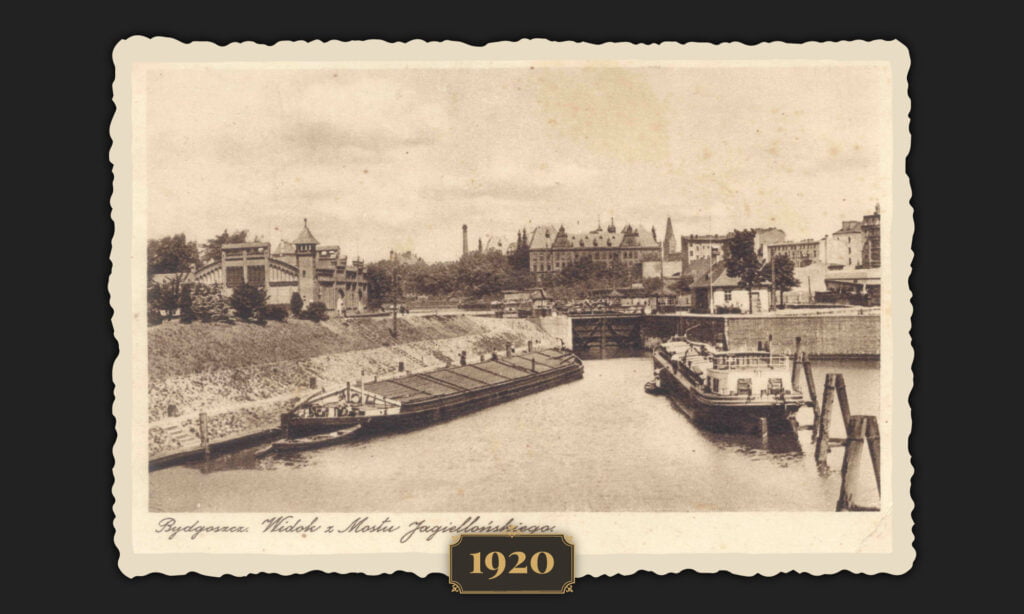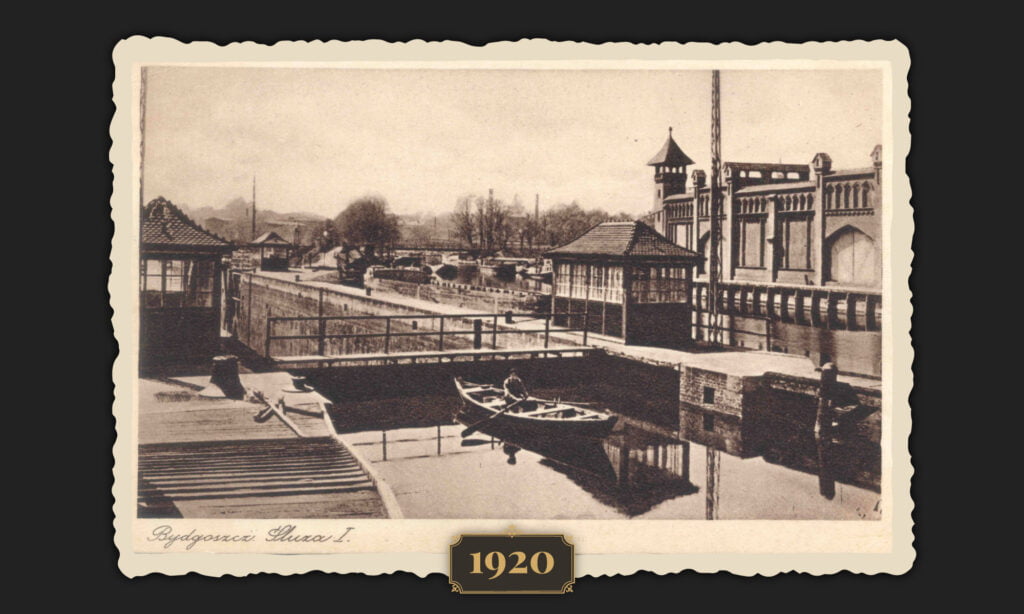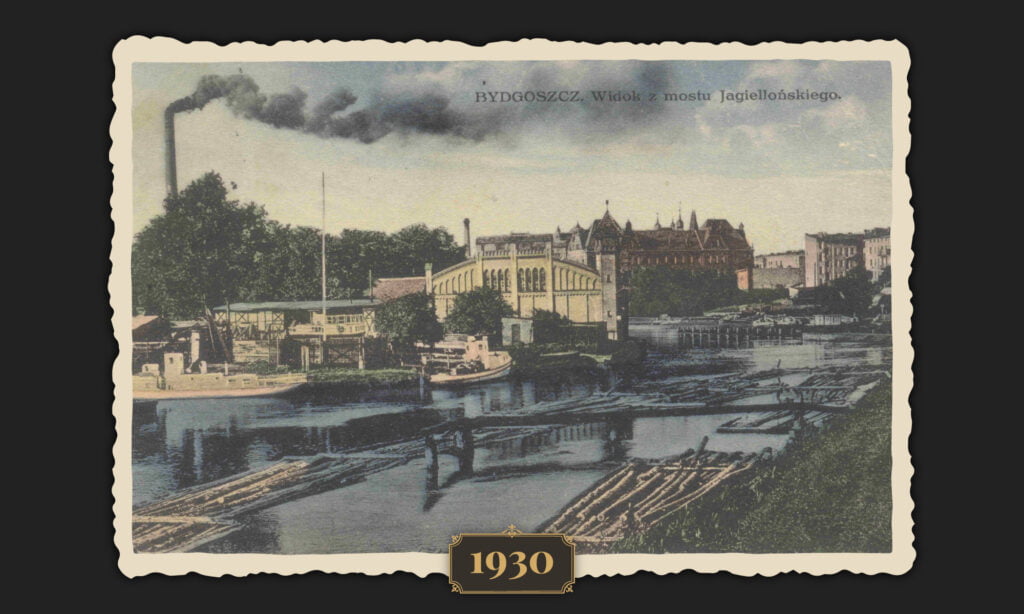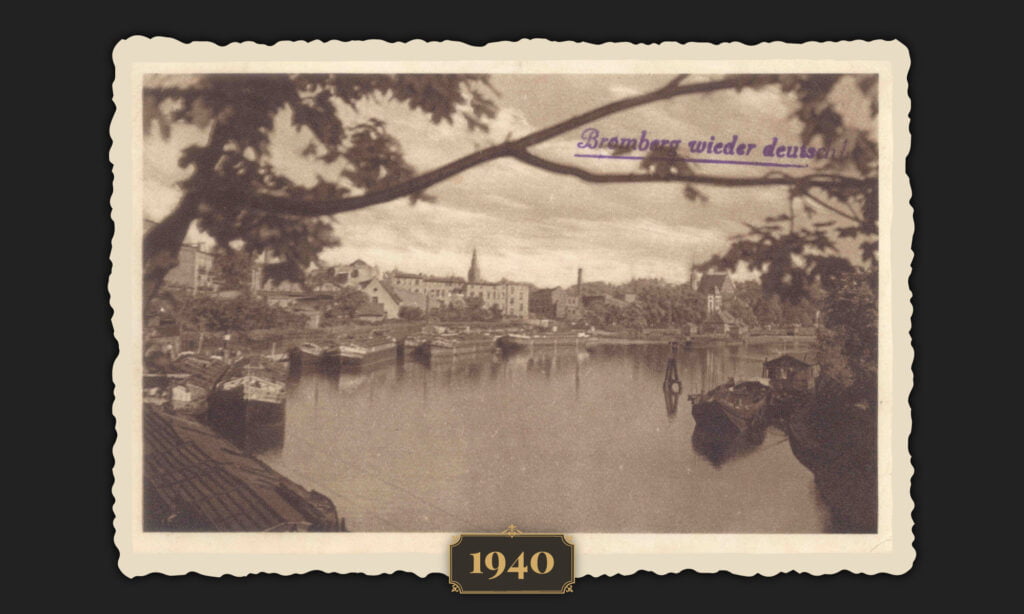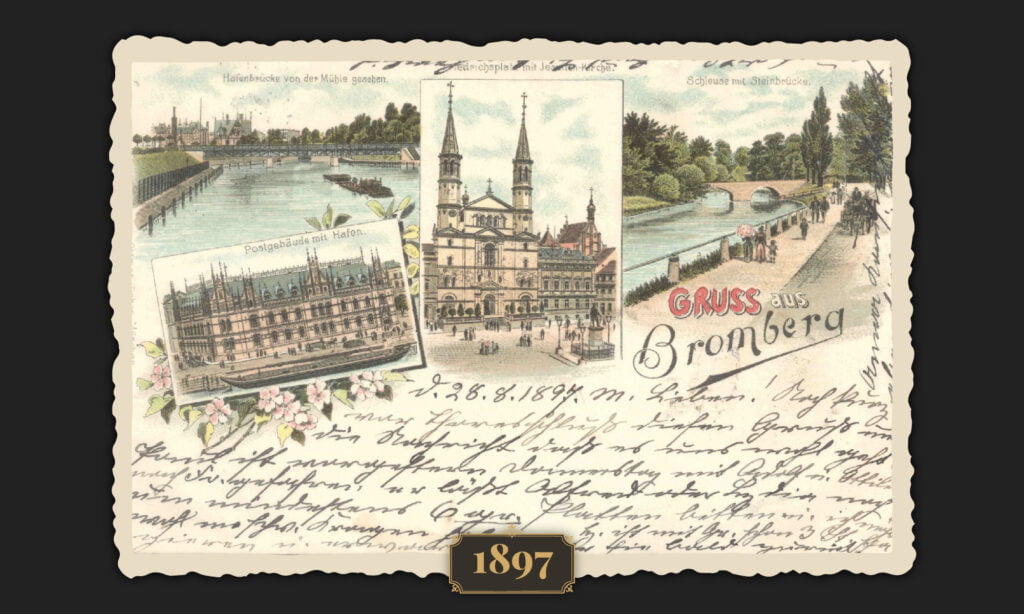

History
and Modernity
We care about our city's identity. Historic buildings are an important element of Nowy Port. The former "Befana" factory will be completely restored and gaining a new life. The factory will be a new culinary point on the map of the Downtown - restaurants and cafes will be here, using the potential of the river.
Learn the beautiful history of the place where the Nowy Port is being built
1852
In 1852, near the City Lock on the Brda River, a small craft workshop producing mangles for washing was established. The excellent location enabled it to transport goods by barge to various parts of the German Empire. Deliveries were also facilitated by the proximity of the new railway station.

1879
In 1879, Leopold Zobel - a master locksmith - came to Bydgoszcz. He opened a modest locksmith workshop in a tenement house, employing 2 employees and producing mainly sewing machines.
The plant was developing dynamically - in 1880, the first steam boiler was successfully produced there and later presented at the exhibition of industry and crafts in Bydgoszcz. This led to a significant expansion of operations. In a short time, Leopold Zobel changed his profile to the production of steam boilers and already employed several hundred employees.

1885
In 1885, for the needs of a larger plant, Leopold Zobel purchased a 5,000 m2 plot at Fischerstrasse and Petersonstrasse (currently: Marcinkowskiego and Obrońców Bydgoszczy Streets).

1888
In 1888, the company launched its own foundry. It also had its own river shipyard. Factory of Steam Machines and Boilers, in addition to boilers and marine machinery, also made ship accessories and cooperated in the production of ship hulls.
Until 1910, the plant built, among others, 12 river steamers with different drives that sailed on the Oder, Elbe and Spree rivers. In 1902, a tugboat with a power of 325 hp was built for navigation on the Elbe and a tanker with a capacity of 350 m3 called "Petrolea" adapted to sail on the Baltic Sea. The plant also built a Vistula ferry to transport the narrow-gauge railway near Gdańsk.

1905
In 1905, production at the plant was expanded to include rolling stock - it produced, among others, narrow-gauge steam locomotives and wagons with a carrying capacity of 5 and 10 tons.

1915
The collapse of the plant occurred with the death of the owner in 1912. The factory was liquidated in 1915.

Do you know that...
today Marcinkowskiego Street,
on a part by the City Lock,
was formerly named
“By the Port.”
The river history of this place and the direct
proximity of the river
was the inspiration for the name Nowy Port.
1922
In 1922, the area and the buildings were purchased by Gustaw Granobs and Henryk Kozłowski.
The factory quickly changed its branch and started producing files and various types of tools.
After Bydgoszcz returned to Poland, the plant changed its name to "Grakona" (Bydgoska Fabryka Files i Narzędzi).

1920s and 1930s
Over the next few years, the factory was declared bankrupt. However, not for long. Onufry Gertner, became the main shareholder, and the rebuilt factory became the largest file factory in Poland. Read the article from 1934 in which Dziennik Bydgoski wrote about the Bydgoszcz "Grakona".

1920s and 1930s
The factory's products were repeatedly awarded national and foreign medals for their quality (including the Grand Prix in Paris in 1927, a medal at the General National Exhibition in Poznań in 1929). In the following years, the factory passed into the hands of Zygmunt Mielżyński-Kornatowski, changing its name to "Prom". About 300 people worked there at the time. Daily production amounted to several thousand different types of tools.

Post-war years
After the war, the factory was nationalized. It changed its name to "Befana" (Bydgoska Fabryka Narzędzi). Under this name, the factory at ul. Marcinkowski is known to many inhabitants of Bydgoszcz.
In the following years, the factory continued to expand its production range and introduce new products to the market. In 1985, it was in second place in the country in terms of the number of products marked with the Q quality mark. As much as 70% of production was exported to 48 countries around the world (including, apart from socialist countries, Great Britain, France, Belgium, the Netherlands, Italy, West Germany , Sweden, Switzerland, the USA and Canada).
The Bydgoszcz Tools Factory was one of the most prosperous industrial enterprises in Bydgoszcz during the times of the People's Republic of Poland. It was called "the pride of the city"..
Over 10 years ago, the headquarters of "Befana" was moved to the Bydgoszcz Industrial and Technological Park, where the well-known brand of Bydgoszcz tools has been successfully operating to this day.

See what did the surroundings of Nowy Port look like over the centuries
The postcards come from the collection of Anna Perlik-Piątkowska and Paweł Piątkowski.
Source of photos, advertisements and graphics: Collections of the Kuyavian-Pomeranian Digital Library, Internet.
And the area at Obrońców Bydgoszczy and Marcinkowskiego Streets begins another chapter of a beautiful history...
Do you have memories related to this place?
Would you like to share an interesting story with other inhabitants of Bydgoszcz? Or maybe you have old photos you'd like to share?
